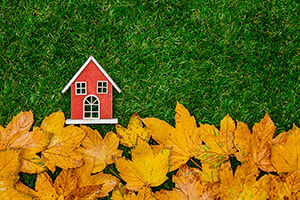 Existing-home sales have continued their impressive climb, setting the fastest pace since December 2006. Low mortgage rates, pent-up buyer demand, and continued job recovery are the key factors fueling the market. Sales are expected to continue their growth throughout the rest of 2020. Low Mortgage Rates Offer Buyers More Purchasing Power Mortgage rates have remained below 3% for the past several months, according to Sam Khater, chief economist for Freddie Mac, which has helped stimulate the housing market even during these uncertain times. “We’re seeing potential homebuyers who now have more purchasing power and many current homeowners who have the option to refinance their loan for a better rate.” For the week ending October 1, the 30-year fixed-rate mortgage averaged just 2.88%, with an average 0.8 point; a year ago, it averaged 3.65%. Despite the record-low rates, Khater cautioned that lender capacity, low housing inventory, and high home prices could put a halt to the record-breaking trajectory of home sales. New Housing Is Needed The lack of inventory that has been plaguing the housing market for years is showing no sign of easing. At the end of August, there were 1.49 million units available for sale, down 0.7% from a month ago and 18.6% from a year ago, when there were 1.83 million homes available. At the current sales pace, unsold inventory would supply the market for only three months, down from 3.1 months in July and four months in August 2019. The lack of housing supply will prevent many would-be buyers from achieving their homeownership goals. According to Lawrence Yun, chief economist for the National Association of Realtors, the inventory shortage has worsened over the past month because of the rapid increase in lumber prices, as well as a lumber supply shortage due to the California wildfires. “This has already led to an increase in the cost of multifamily housing and an even higher increase for single-family homes.” The lack of supply, coupled with an increase in demand, will put even more strain on the fragile supply of homes. NAR’s “2020 Work From Home Counties” report found that remote work opportunities will become more commonplace in the nation’s workforce culture. According to Yun, this trend will continue, even after a COVID-19 vaccine is made available. As a result, measures should be taken now to increase the supply of homes, such as investing in new home construction. Prices Are Up, but Houses Are Selling Faster This Year Than Last The average property remained available for sale for just 22 days in August, unchanged from a month ago; a year ago, homes remained on the market for 31 days. Of all the homes sold in August, 69% were available for less than a month. Home prices have seen year-over-year gains for the past 102 months. The median existing-home price climbed to $310,600 in August, 11.4% higher than August 2019. Every sales region in the country reported price gains in August. Regional Sales Breakdown for August 2020 For the past three months, home sales have increased month over month in every sales region. What’s more, median home prices saw double-digit gains from last year. Northeast - Existing-home sales annual rate of 740,000; an increase of 13.8% from July 2020 and 5.7% from August 2019. Median sales price of $349,500, an increase of 10.4% from August 2019. Midwest - Existing-home sales annual rate of 1,410,000; an increase of 1.4% from July 2020 and 9.3% from August 2019. Median sales price of $246,300, an increase of 10.7% from August 2019. South - Existing-home sales annual rate of 2.6 million; an increase of 0.8% from July 2020 and 13% from August 2019. Median sales price of $269,200, an increase of 12.3% from August 2019. West - Existing-home sales annual rate of 1,250,000; an increase of 0.8% from July 2020 and 9.6% from August 2019. Median sales price of $456,100, an increase of 11.8% from August 2019. 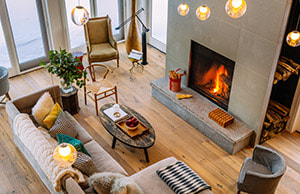 It’s that time of year again. Pumpkin spice goodies and home makeover trends dominate Pinterest boards and magazine covers. Here are a few key trends for fall and winter: Woodsy Vibes Type in DIY wood pallet on Pinterest and watch the firestorm that comes back. This year, it’s all about mixing woods and stains. Whether you prefer the unfinished, rustic look or lean toward deep cherries and intense oaks, this is the year to mix it up and experiment. Heavy Knits The financially savvy understand the best way to redecorate is with accessories. Instead of a new couch or table, upgrade a room with throw pillows and blankets or candles and mirrors. Fall 2020 is all about chunky, cozy blankets. Find one in a deep purple or midnight blue and toss it over an armchair, then hibernate with a cup of hot tea and enjoy the laid-back charm of a happy home. Citizen of the World Cultural themes are too matchy-matchy. This year, people want to mix patterns from all over the globe. So hit up your favorite boutique and look for paisleys, ornate Indian prints, handmade pottery, and dyed textiles. Imagine tassels, rope, and safari prints on everything, including throw pillows and wall art. Celebrate earthy textures like volcanic stone and amber in rich colors of berry and ebony. Contemporary Charm Like seasons past, the neutral minimalism of modern décor never goes out of style. Set a wicker chair on an oatmeal-colored natural-fiber rug and breathe in the effortless charm of the artisan-inspired home. Use natural materials to offset pops of color, like handblown glassware on a silver tray.  In the unlikely event that disaster strikes, you'll want to be prepared for the worst. After a burglary, house fire, or flood, it's hard to think clearly about next-step details like filing an insurance claim. Having a complete home inventory will relieve some stress by ensuring you're quickly reimbursed for stolen or damaged possessions. Here's how to make one: What Should You Include in Your Inventory?Include any possessions you would want to receive reimbursement for if they were destroyed or stolen, such as expensive furniture, jewelry, firearms, electronics, antiques, tools, and designer clothing. A thorough way to document items is to focus on completing one room before moving on to the next. Also, don't overlook storage places such as the basement or garage. Create an Extensive Record. When creating a record on paper or digitally, you'll need more than just a list of your possessions. Take pictures of each item, include descriptions of their condition, and save any original receipts or serial numbers. There are home inventory apps to help you organize your photos and pertinent information. Take Videos of Your Possessions. Taking a video walk-through of your possessions provides clear documentation without the need to list every cup and fork you own. Get close-ups of smaller items to ensure you have a clear image. Keep a running dialogue while you record to provide descriptions of each item's condition. You'll still want to save original serial numbers and receipts. Regularly Update Your Inventory and Keep It Secure. You should update your inventory when you receive expensive gifts, such as during the holidays or after your birthday. Make it a habit to record new furnishings, electronics, or appliances, and remove items on the list that you no longer own. After all your hard work, don't accidentally lose your home inventory. Make sure it's securely stored in a fireproof safe, safety deposit box, or digitally in the cloud. 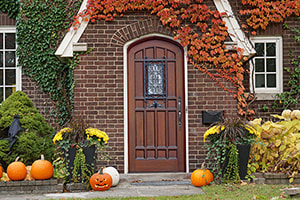 If you're preparing to sell your home, you might be wondering if you should make repairs or improvements before listing it. The answer depends on the overall condition of the property, the type of buyer you want to attract, and the current real estate market. If You Can't Afford Repairs, Sell As Is This applies to major issues like structural damage, plumbing complications, and electrical problems. Keep in mind that your buyer pool will most likely consist of flippers and contractors. While you might have to consider low offers, you won't have to deal with the hassle and expense of repairs. Most Buyers Want a Turnkey Home A move-in ready home comes with expectations based on factors such as the price and the neighborhood. For example, some people will expect upscale interior finishes and won't consider buying a house that doesn't have granite countertops or newer appliances. To get an idea of which improvements would be appropriate, look up houses in your area that are listed at your price point. What About Upgrades? When implementing upgrades, figure out the costs first and then compare them to what the property value might be after the upgrade. If you can't justify a return on the investment, it's worth rethinking the effort. Keep upgrades in line with what other homes have in the neighborhood. Fixer-Uppers Attract Buyers Who Want a Deal Many buyers say they don't mind fixer-uppers, but what they really mean is cosmetic repairs, such as replacing carpets, updating light fixtures, painting walls, or changing cabinet doors. They don't want to deal with moving walls, changing layouts, and doing other time-consuming projects. These types of buyers usually want to make a profit or don't qualify for costlier homes. They are likely to make offers below the asking price. Most homes need at least some minor repairs, such as patching holes and repainting walls. Anything that doesn't work right makes buyers wonder what bigger, invisible problems might be lurking. Since most buyers will use a home inspector, make sure that any potential code violations have been fixed as well. If you can't fix them yourself, hire someone. In a hot market, where properties are scarce, homes sell better with fewer fix-ups. Any home for sale that needs repairs will likely deliver lower prices, regardless of the market's environment. If you have questions about getting your home ready to sell, contact me today.  With existing-home sales continuing their upward trajectory, many economists believe that the housing market is well past the recovery phase. Lawrence Yun, the chief economist for the National Association of Realtors (NAR), believes the market is in a boom phase, with home sales comparable to pre-pandemic levels. "With the sizeable shift in remote work," he says, "current homeowners are looking for larger homes, and this will lead to a secondary level of demand even into 2021." Homes Sold in Record Time The increase in demand from buyers was evident in the amount of time properties remained on the market. The average property was available for sale for only 22 days in July, down from 24 days in June and 29 days a year ago. Of all the homes sold in July, 68% were available for less than a month. The short time from "for sale" to "sold" is evidence of the housing shortage that continues to plague the market. By the end of July, total housing inventory declined 2.6% from a month earlier and a staggering 21.1% from a year earlier. At the current sales pace, unsold inventory would supply the market for only 3.1 months, down from 3.9 months in June and 4.2 months in July 2019. According to Yun, this lack of inventory will impact sales. "The number of new listings is increasing, but they are quickly taken out of the market from heavy buyer competition. More homes need to be built." Property Prices Climb The lack of inventory is leading to an increase in home prices. In its latest data release for metro home prices, NAR recorded that in 2020's second quarter median single-family home prices increased in 96% of measured markets when compared to a year earlier. Median prices climbed 8.5% year over year. What's more, every sales region in the country recorded price gains. Home prices have seen year-over-year increases for the past 101 consecutive months; July's price increase marked the first time median home prices climbed above the $300,000 level. Regional Sales Breakdown for July 2020 Every sales region in the country reported double-digit, month-over-month increases. Only the Northeast saw a decline in year-over-year sales. Median home prices climbed in every region when compared to July 2019 data. Northeast: Existing-home sales annual rate of 640,000; an increase of 30.6% from June 2020, but a decrease of 5.9% from July 2019. The median sales price ($317,800) increased 4% from July 2019. Midwest: Existing-home sales annual rate of 1.39 million; an increase of 27.5% from June 2020 and 10.3% from July 2019. The median sales price ($244,500) increased 8% from July 2019. South: Existing-home sales annual rate of 2.59 million; an increase of 19.4% from June 2020 and 12.6% from July 2019. The median sales price ($268,500) increased 9.9% from July 2019. West: Existing-home annual rate of 1.24 million; an increase of 30.5% from June 2020 and 7.8% from July 2019. The median price ($453,800) increased 1.3% from July 2019. 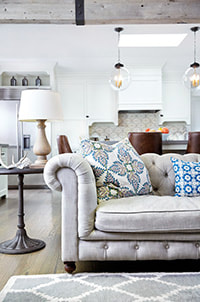 Investing in some high-quality decorative pieces will add that atmosphere of polished flair to your home that everyone wants. Here are some splurge-worthy home decor ideas that make up for the extra expense with style points: Invest In a High-End Piece A single classy piece brings a room up a notch instantly—even if it costs as much as all the room furnishings and accessories combined. It's worth splurging on quality furniture, rugs, light fixtures, and artwork. Choose something that's meaningful to you and that you'll enjoy seeing every day for years to come. Add Gorgeous Lighting Updating a light fixture in a living room or dining room is the equivalent of updating the appliances in the kitchen. New light fixtures not only improve the appearance of a home but can also increase safety and energy efficiency. Consider whether it makes sense to install a single statement light fixture or layer multiple types of lighting. For example, pendant lighting and recessed lighting in a kitchen work beautifully. If you aren't sure how to start shopping for lighting, gather inspiration online and consult with a lighting specialist at a hardware or home improvement store. Go Big with an Area Rug You don't have to recarpet the entire room to provide a new look for your home. Laying down an 8-by-12 area rug with a modern or traditional pattern can alter the entire space. Similarly, smaller area rugs can be used as accents to your flooring by adding color and texture to wood floors or stone tile. Natural plant fibers like sisal and jute can give your rooms a more open, casual feel that is particularly pleasant for warm weather months and in a room that offers a good view of the outdoors. 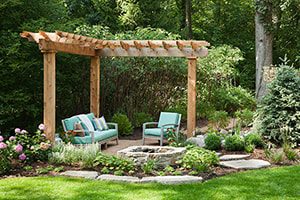 The backyard isn't at the top of most homeowner's home-design plans, which may be a good thing. Because when it comes to designing outdoor living space, you'll want to have a well-developed decor style that fits your personality. Here are design elements that appeal to six different personalities: The Traditionalist: Classic Comfort What is the primary purpose of a patio? A place for sitting and relaxing. Attractive, sturdy pavers in appealing patterns provide easy walking and an artistic base for conversation nooks of tables, chairs, planters, and picnic tables. The Bohemian: Fire Pit Fire pits create a cozy outdoor atmosphere, especially as we move into late summer and early fall. Consider wood fires to keep mosquitoes at bay—everyone appreciates freedom from bugs! The Modernist: Multiple Levels Homeowners seeking a modern look can consider a range of options for walkways and pavers that might include steps and slopes to wind through a terraced garden. The Eclectic: Water Features They're not just for swimming. Homeowners can show off an eclectic backyard style with a fountain, fishpond, or other water feature that makes a splash. The Rustic: Outdoor Eating Bring cooking outside to a new level, with advanced outdoor kitchen units that allow guests to assist in meal preparation or simply chat with the host chef while enjoying the setting. The Industrial: Unique Lighting Want to make a statement and set a mood in an outdoor setting? Get creative with light by including hardscape lighting and illuminated planters, or short-term elements such as lighting fixtures that highlight cool metals and metallics for a more urban, industrial vibe.  Applying for a mortgage may not be as fun as looking through listings to find your dream home, but getting your financing approved is the first step in the house-hunting process. It's important to do more than just get an online quote from a mortgage lender. You should enter the house-hunting process with a preapproval letter in hand. Here's why: You'll Know Your Price Range Finding out the cost of a house you can afford will save you from shopping for homes that are outside your budget, and you'll also know what loans you qualify for. There are zero down payment loans available through the VA or other low down payment options available through the USDA if you qualify. Keep in mind that a loan with a smaller down payment usually means a higher interest rate and a higher monthly payment. Serious Buyers Are in a Stronger Position to Negotiate Having a mortgage preapproval confirms you are a serious buyer. When you negotiate with a seller, the discussions will be more productive when they know you are serious about buying. Sellers might also be more open to consider lowering their price or making other concessions to close a sale. Start Now to Get the Paperwork Out of the Way Applying for a mortgage takes a lot of paperwork. You'll need to collect your W-2s and tax returns and bank statements and pay stubs. Getting all your paperwork ready will speed up the home-buying process. The sooner you get your paperwork together, the quicker you'll be able to move to closing when you find your dream home. Know How Much You Need to Pay at Closing When you decide on a home to buy, you need to do more than just make the down payment. You also need to write a check for the closing costs, which can include origination fees, appraisal fees, and title fees. While the seller will usually pay a part of the closing costs, you'll pay a large share, typically about 2%– 5% of the mortgage amount. If you talk to a mortgage lender, you'll know how much your loan is likely to be and what kind of closing costs you need to be ready for. Take Advantage of Low Interest Rates Mortgage rates are historically low, which means your monthly payments will be less than what they would have been just a few months ago. If you're concerned that loan shopping negatively affects your credit score since it results in a credit inquiry, know that the damage is minimal—possibly 5 points. Applying to multiple lenders within a 45-day window is counted as a single inquiry on your credit report. If you're ready to get preapproved for a home loan, contact me today. |
AuthorA variety of pertinent real estate topics and tips from various authors and contributors. Archives
December 2024
Categorieshow much home can i afford?*
|


